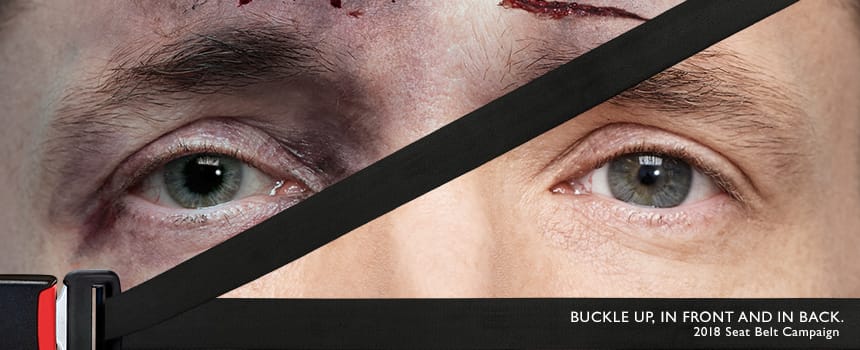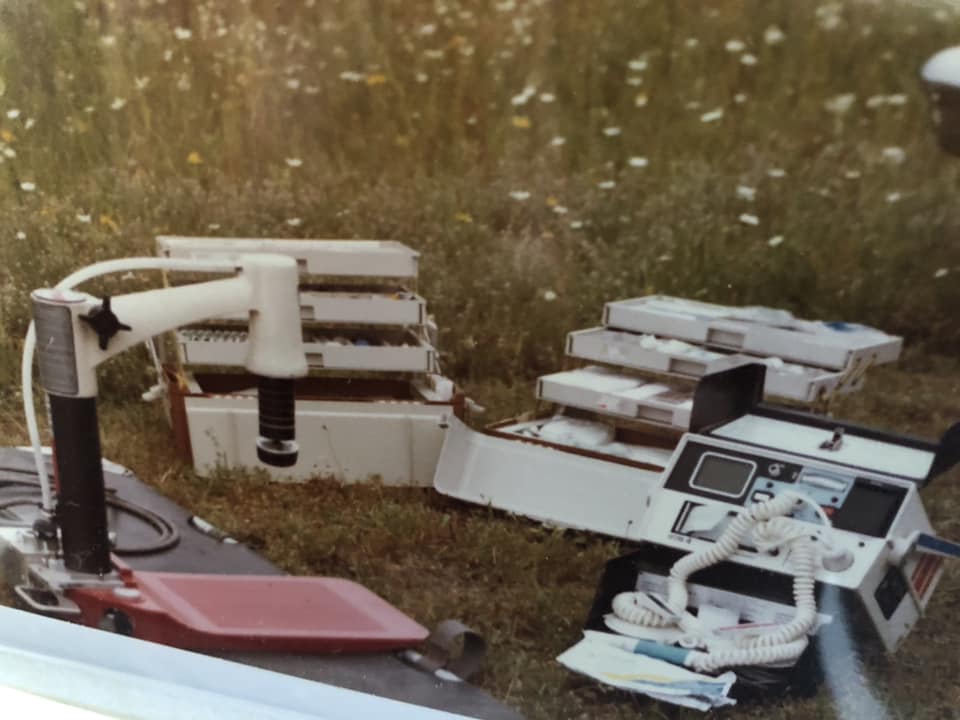Untethered

In December of 2023, we reported on the decision by the police and fire services of Montreal and Laval to stop allowing their personnel to perform CPR in the back of moving ambulances.
This is the first in a series of articles examining the context for that decision.
Code 99, Code Blue or just Code. Shorthand for cardiac arrest. An absence of life signs. No respirations. No pulse. Seldom as simple or as clean as the previous description. Often comes as a surprise to both the patient and the other people at the scene. Sudden cardiac arrest. Even with rapid intervention the outcome is far from assured.
There is nothing delicate about a code. The resuscitation efforts are a brutal assault on the body in an effort to force it back to this side of the life and death divide.
I remember the very first time I performed CPR in a moving ambulance. I can remember going down Park Avenue in Montreal. I had one hand holding onto the ceiling bar and one hand on the patient's chest. We had a paramedic student with us and he was working the ambu-bag. My partner was navigating through rush hour traffic and I remember we got into a fairly smooth serpentine motion kind of like we were doing a slalom down a ski hill. It was hot and sticky outside that day – and it was a sweatbox inside the ambulance. The patient's heart decided to convert to a more useful rhythm just as we made the turn for the Royal Vic and so the screaming siren was somehow overshadowed by the beep-beep-beep on the monitor. When we pulled up at the Vic and the door opened there was a rush of fresher air and a swarm of colleagues who rushed the patient into the ER. I remember sitting on the curb afterwards and feeling simultaneously exhausted and exhilarated.
Seatbelts.
According to the Automobile Coalition for Traffic Safety, all new passenger cars had both shoulder and lap seatbelts in 1968. They weren’t integrated into a single belt yet. That wouldn’t happen until 1974.
Ontario (January) and Quebec (August) were the first jurisdictions in North America to enact provincewide seatbelt legislation in 1976. In the United States, New York enacted the first statewide seatbelt law in 1984.
The US National Highway Traffic Safety Administration (NHTSA) estimates that the use of lap and shoulder combination seat belts reduce the risk of fatal injury to front-seat passenger car occupants by 45 percent and the risk of moderate-to-critical injury by 50 percent.
Firefighting.
I started as a firefighter in 1978. We didn’t have nomex balaclavas under our helmets because Nomex wasn’t commercially available until 1983. Back then, you came out when your ears started to get too hot. Our coats fastened with metal clips that froze solid during winter fires and you’d need help getting out of your gear back at the station. We didn’t have firefighting pants back then – only thigh-high rubber fireboots without any insulation.
Most critically for this discussion, when we responded to a call, two firefighters rode in the cab and two firefighters (including myself) rode on the backstep of the firetruck. We wore a belt that allowed us to clip onto a vertical handhold bar but we were otherwise completely exposed to the elements and the very real possibility of losing our grip and falling off the truck. I saw a lot of Montreal and, eventually, West Virginia, from the backstep of a firetruck.
By the mid 1980s that practice had stopped and the design of firetrucks changed to ensure everyone had a (relatively) secure place to sit complete with what are called ManSaver bars – literally bars that snapped into place to prevent a firefighter from falling out of the seat. By 1991, NFPA apparatus standards specified that all firefighters had to be inside a completely enclosed cab with an approved seatbelt for each occupant.
Emergency prehospital care
I started working on ambulances right after I started as a firefighter – in the late 1970s in Montreal.
Clearly, I’ve been selling myself short all these years.
When friends discuss their athleticism, I always downplay any sporting grace I may have possessed in my younger years. Instead, I tell them I once played lacrosse in college, played on the defensive line in football and had a less-than-storied run of hockey arenas when I was much younger. I will say I tended towards the more brutish side of sport.
Of course, that negates the decades of indelicate ballet I performed within the confines of the patient-care compartments of a multitude of ambulances during my career as a paramedic.
I would, somehow, keep upright while simultaneously caring for a patient, communicating with a waiting ER, attaching (or detaching) various pieces of equipment, and dealing with all manner of fluid spills. I would think the less detail on that last part the better however, suffice to say, it can get pretty immersive in the back of an ambulance.
While I was never seriously injured in the process, I did get hurt – with a variety of bumps and bruises and a couple of broken bones in my hand. But nothing that kept me off the job for an extended period of time. Enough near-misses between my head and the edges of compartments to continue to haunt me all these years later when making my way through cramped spaces.
To the best of my knowledge, the only other group of professionals who are permitted to perform their jobs while freely moving around a vehicle which is hurtling through time and space in a relatively controlled manner are astronauts. However, when they train aboard an aircraft known as the Vomit Comet (yet another parallel) they are surrounded by layers of padding and only experience weightlessness for seconds at a time.
Paramedics need to be able to maintain their balance and composure as their partner navigates traffic in a continuous and sinuous real-life video game punctuated by the sounds of sirens and the incessant beeping of biotechnology attached to the patient. Eiza Gonzalez who starred in the role of an EMT in the Michael Bay-directed film ‘Ambulance’ is reported to have rented an ambulance and had a friend drive her around to improve her balance.

Performing CPR
When I started my career as a paramedic we were still using HLRs (Thumpers) on our ambulances. Thumpers were oxygen or air-powered devices that performed automatic chest compressions and ventilation on patients in cardio-respiratory arrest.
This allowed paramedics to provide care while securely fastened into their seats in the patient care compartment of the ambulance. It also allowed us to navigate tight stairways, elevators and other obstacles without ever having to pause CPR. In short, Thumpers provided (mainly) reliable CPR. However, they were incredibly heavy and cumbersome to haul into and out of emergency scenes.
I reached out to some of my colleagues from the same era to get their recollections on the Thumper.
“One of my first calls was a cardiac arrest with Hatzolah using a Thumper. We could hear it from three floors down.” “Kerchunk kerchunk kerchunk kerchunk kerchunk… Hisss” “Yep, I can still hear in my mind the sound they made. Never hooked up the ventilator part, always bagged to ET. It was a pretty traumatic device for the patient but did create better circulation than manual CPR en route to the hospital..”
Back then, there were advanced care paramedics on the streets of Montreal. We were part of the Paramedic program which ran out of Dawson College and the Royal Victoria Hospital. And like advanced care paramedics in other cities, we were very intense and competitive. We went to conferences and we competed against one another for the right to be known as the best – kind of like Top Gun for paramedics.
In 1978 there were rumours of a young American paramedic going head-to-head (as it were) with a Thumper as part of a contest to see if anyone could equal or outperform the Thumper in 10 continuous minutes of CPR on a recording Resusci-Annie. All these years later, I discovered that paramedic was none other than my old friend Norm Rooker.
As Norm tells the story, “Brother, you know me now. Let’s just say as a young EMT, I was 21 or 22 at the time, that I saw myself as the "John Henry" of EMTs. Well, like the line from "The Devil Went Down To Georgia" when I came up to the Dixie Medical Products booth at my first ever EMS conference, The American Association of Trauma Specialists, in 1977 or 1978 being held in Elgin, Illinois. In my head I was literally saying to myself "I'll take your bet and you're going to regret it because I'm the best that has ever been." And yeah, pride go'eth before a fall. I came in second but... I was later told by the Dixie representative that I was one of the closest they had ever seen in the two years they had been running the challenge at various state and national conferences. May have just trying to make me feel good or maybe I really was the first loser.”
And while the Thumper of the early part of my career may have been a work in progress, it still made caring for a patient in cardiopulmonary arrest while en route to the ER a lot safer.
Our Thumpers disappeared when our service became part of Urgences-santé and Québec does what Québec always does: takes everything down several notches to the lowest common denominator. So, rather than evolving to later generations of the Thumper or moving to the LUCAS system when it was launched in 2003, Québec’s emergency prehospital care system opted for paramedics performing CPR while untethered in the back of moving ambulances.
Eventually, paramedics were joined by cops and firefighters as they became CPR certified or were operating as first responders. They climb into ambulances and perform CPR en route to the ER while paramedics focus on maintaining the patient’s airway, monitoring vital signs, and resuscitation.
Which is why the decision by the fire and police services of Laval and Montreal to stop providing their personnel to perform CPR in the back of moving ambulances is so meaningful. They are, effectively, trying to force Urgences-santé (owned and operated by the Government of Québec) to deploy LUCAS devices in all of its ambulances to make the resuscitation of patients in cardiorespiratory arrest that much safer for the people trying to save their lives.
Why Urgences-santé refuses to purchase LUCAS devices is a mystery. CETAM, the paramedic-owned cooperative which serves the Montérégie deployed LUCAS devices across its entire territory in August of 2020.
And in November 2023, the Service ambulancier de la Baie and the Services secours Baie-des-Chaleurs deployed LUCAS devices in all of their ambulances.
Meanwhile, in the busiest service in Québec, paramedics and first responders are still expected to perform cardiopulmonary resuscitation while moving down corridors, traveling in elevators and escalators, negotiating staircases, and while not wearing seatbelts inside moving ambulances.
Next in the series : The human cost of injuries sustained by paramedics while performing CPR.